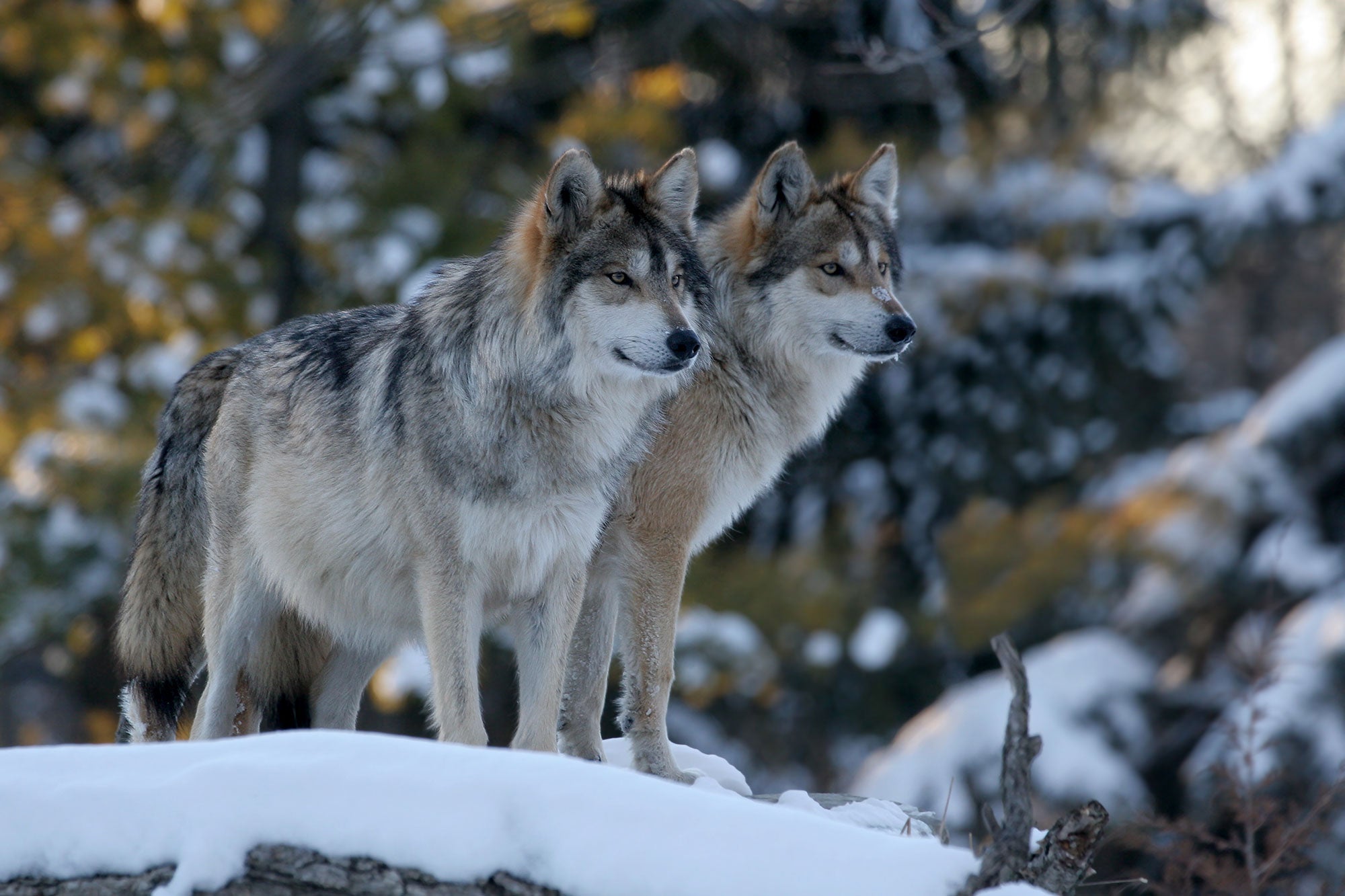Congress is Trying to Weaken the Endangered Species Act. Again.
A new bill to remove ESA protections needed for wolves and grizzly bears has been proposed.
Editor’s Note
The ‘Trust the Science’ Act, targeting wolves, passed in the House on April 30 with a 209 to 205 vote. There is no indication that it will be taken up by the Senate. There is also no indication that the legislation targeting grizzly bears will move forward this Congress.
It shouldn’t take a staggering loss of plant and animal species before the United States realizes that the biodiversity crisis is just as dire an environmental challenge as climate change. But that is what’s happening. Our nation’s primary tool for mitigating that crisis is the Endangered Species Act (ESA), but members of Congress representing special interests are acting again to weaken the ESA. This time by trying to remove ESA protections needed by wolves and grizzly bears, including through Representative Boebert’s so-called “Trust the Science Act.”
The immediate reasons to oppose these delistings are simple. Gray wolves fit the legal definition of an “endangered species,” and any species fitting that definition is required to receive the full protections of the ESA. There is no scientific basis for thinking that wolves occupy enough of their former range within the conterminous United States to be anything but an “endangered species.” This view has also been supported by numerous court decisions. The courts’ consistent decisions are why the resolutions pressed by Congress exclude the possibility of judicial review. The situation is the same for grizzly bears, except the Fish and Wildlife Service classifies grizzlies as “threatened” – a classification also requiring ESA protection.
Wolves and grizzlies require ESA protection from humans killing them at unsustainable rates – killing long motivated by unjust levels of intolerance and hatred. The undue killing led wolves and grizzlies to be lost from many places where they could readily live again – places like the Bitterroot Mountains for grizzly bears and many places in the eastern and western U.S. for wolves.
Marked improvements for wolves and grizzlies are not only ecologically feasible, but also supported by research indicating that such improvements are readily achievable without any citizen bearing an undue burden. However, realizing these improvements requires ESA protections. One of the most immediate effects of ESA protections for wolves and grizzlies is to prevent state governments from threatening them with rates of hunting and trapping that betray their recovery, ecological value, and intrinsic value.
The broader reason to oppose congressional efforts to weaken the ESA is that it is the nation’s most important tool in fighting an insidiously underappreciated facet of the biodiversity crisis.
Humans have increased the rate of species extinction by orders of magnitude over the background rate. Consequently, of approximately 40,000 known species of vertebrates, 20% are believed to be at elevated risk of complete, worldwide extinction. Those statistics are important and grim, but they also represent an inadequate understanding of the biodiversity crisis.
The less appreciated but no-less-important facet of the biodiversity crisis is the contraction of species’ geographic ranges. The loss of species’ geographic ranges to overexploitation and habitat destruction is eye-popping. The majority of studied terrestrial vertebrates (birds, mammals, reptiles and amphibians) have been extirpated from 60% or more of their geographic ranges. The cumulative effect of those losses means that disturbingly large swaths of the Earth’s land have lost substantial portions of their native biodiversity. For example, most native mammalian fauna has been extirpated from more than 50% of the conterminous United States.
The ESA is well-designed to combat both facets of the biodiversity crisis – global extinction and range loss. But only if the Fish and Wildlife and National Marine Fisheries Services administer the ESA in accordance with court orders and with the support of Congress. The essential support that Congress can and should provide is to adequately fund the Fish and Wildlife Service’s endangered species program and to pass a version of the Recovering America’s Wildlife Act that effectively holds state governments accountable for using federal funds to resist the biodiversity crisis in scientifically-proven ways.
Public support for the ESA is strong and widespread. That support is evident among liberal and conservative citizens and in regions of our nation where controversial species – such as wolves – have been protected by the ESA. Most Americans think the ESA should be more protective of biodiversity (not less) and that the ESA should receive more funding (not less) from Congress.
Compared to other nations, the U.S. has disproportionately contributed to worsening of the biodiversity crisis. Yet we contribute less than our fair share to fighting the biodiversity crisis, even though our wealth makes us more able than other nations to mitigate it.
Europe’s people demonstrate that while challenging, coexisting with wolves and brown bears is possible, even in places with much larger and more dense human populations. Case in point: Germany, which is roughly comparable to the state of Montana in size, is currently home to an estimated 1,300 wolves and 84 million people. Montana, by comparison has about 1,100 wolves and a little over a million people.
The Biodiversity Defense Program fights to reshape our relationship to lands, water, and wildlife everywhere by confronting the major drivers of the decline in nature, including habitat destruction and over-exploitation of wildlife.
